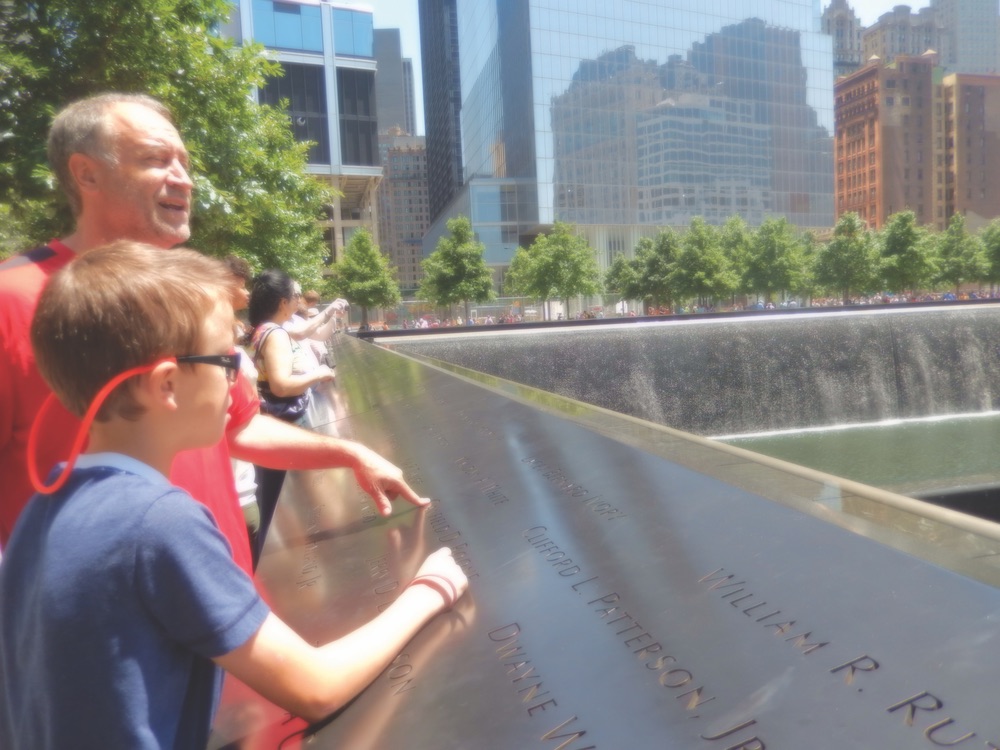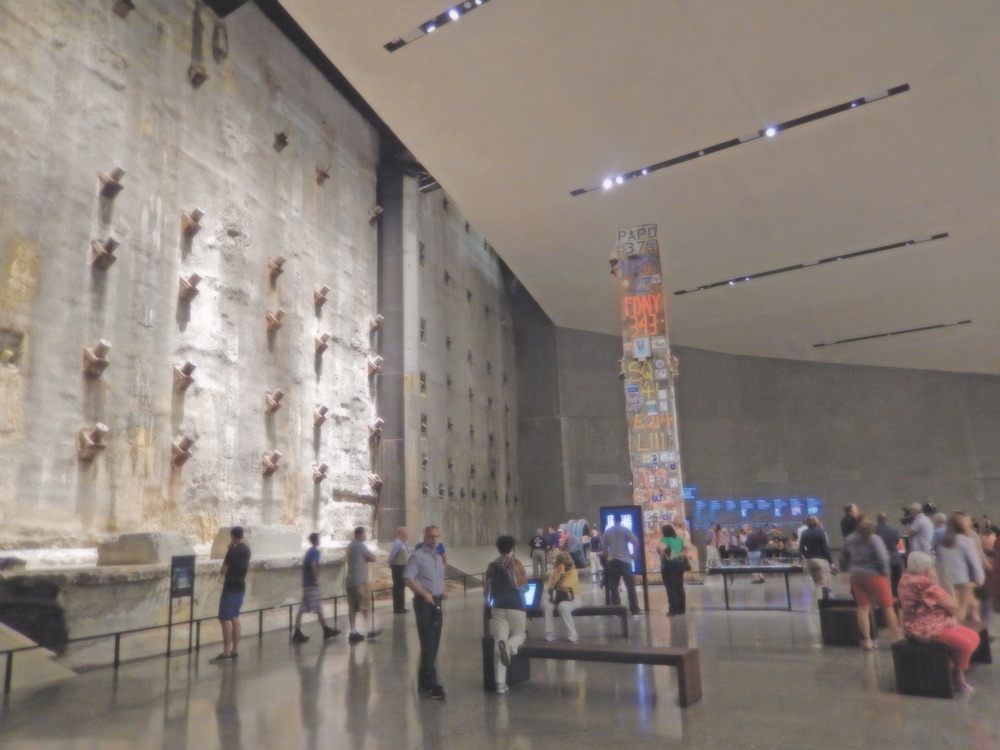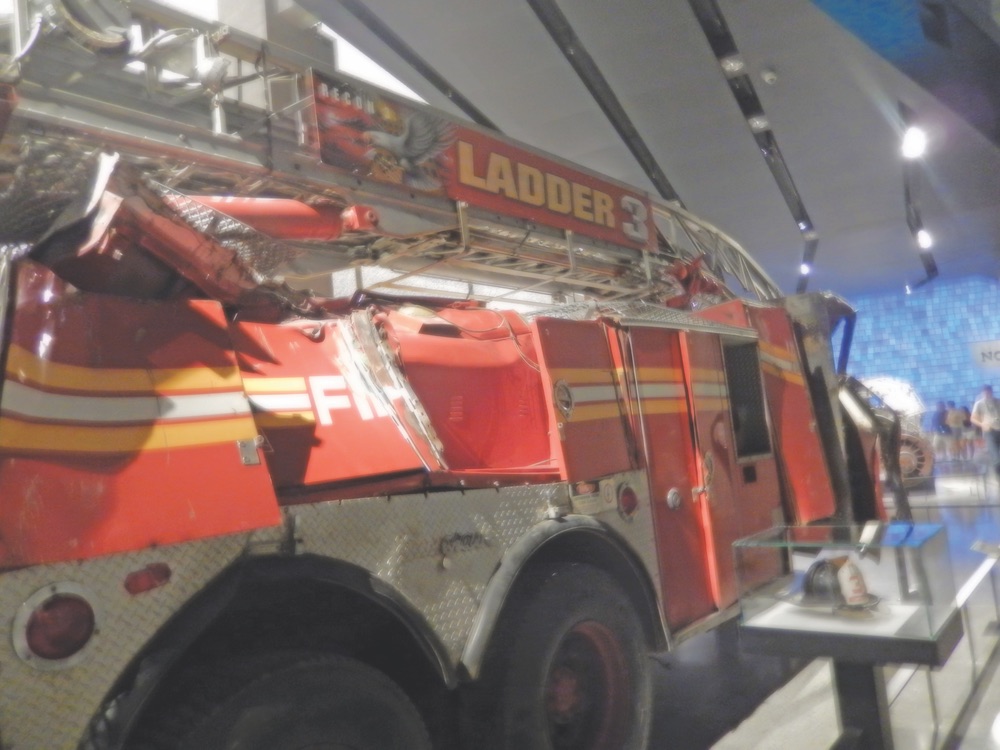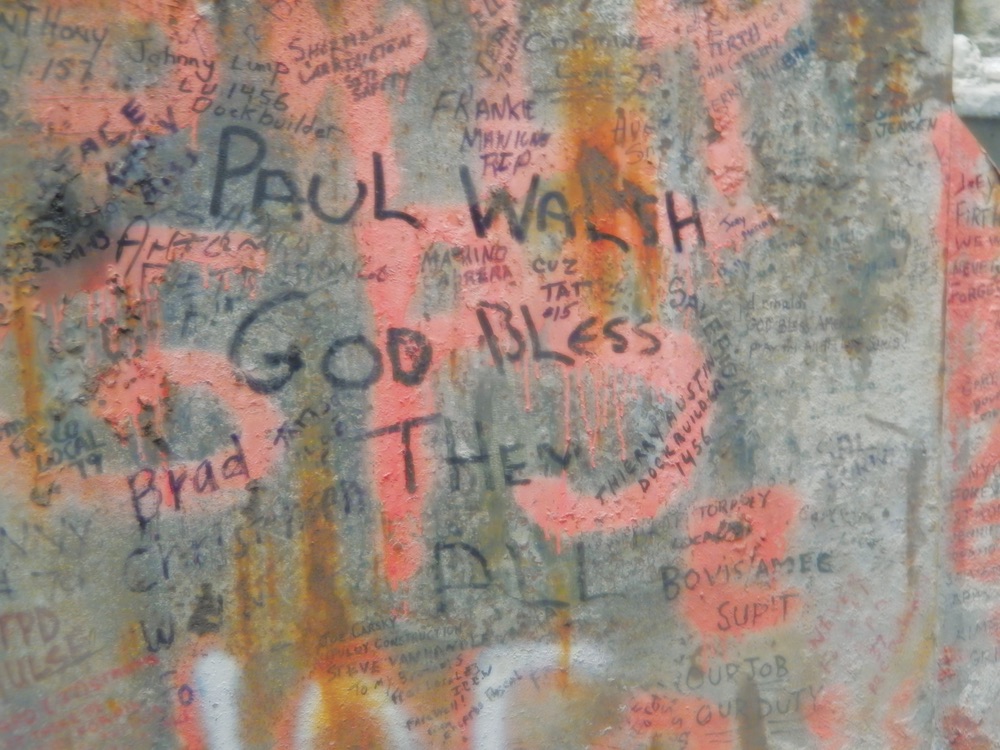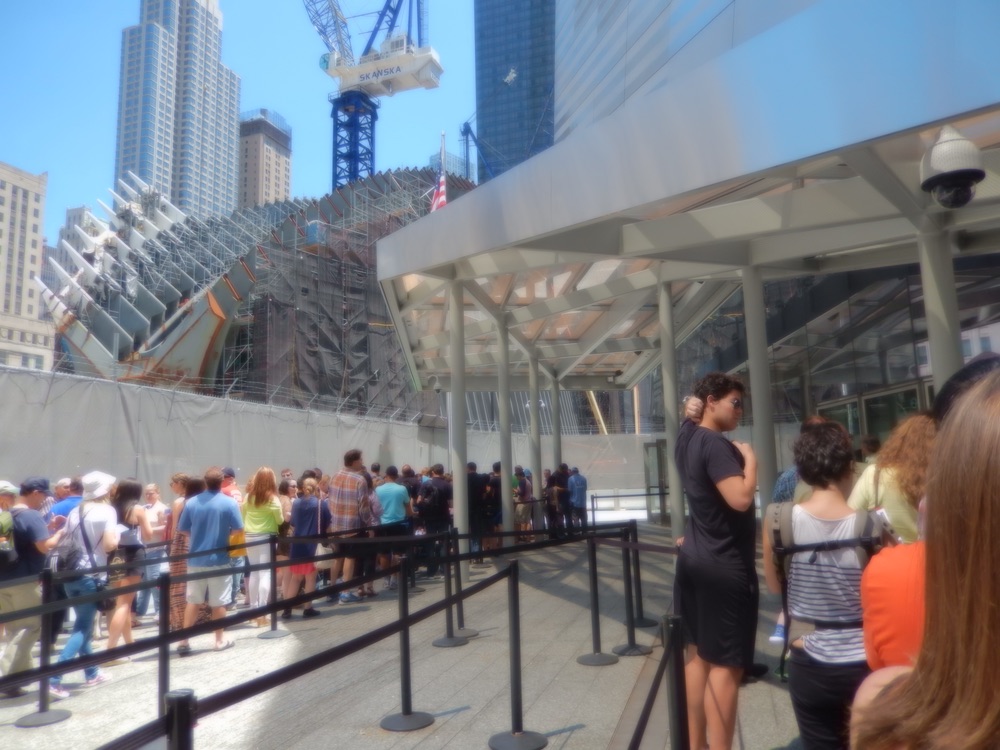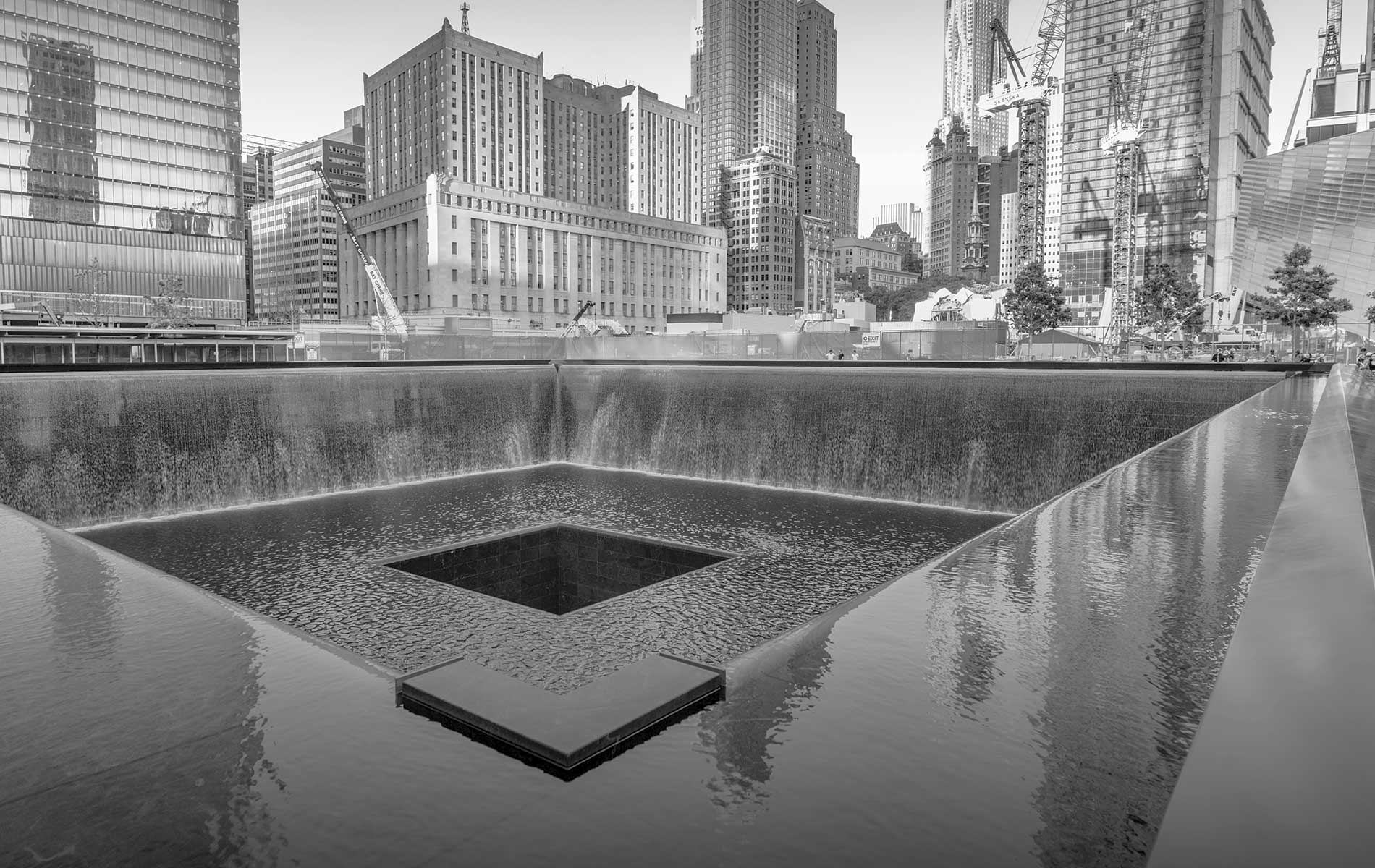
vie-magazine-september-11-memorial
A Symbol of Hope
The National September 11 Memorial and Museum
Story and photography by Martha J. LaGuardia-Kotite
My memory of what happened on September 11, 2001, begins the evening before: Monday. My mother-in-law, sisters-in-law, and closest girlfriends filled a table for my baby shower at Swifty’s, a restaurant on the Upper East Side of Manhattan. Dining across from us was Dominick Dunne, the best-selling novelist and Vanity Fair investigative journalist, who observed the scene through his large, round glasses. We toasted the anticipated October arrival of my son and our life dreams while laughing at each other’s stories. We parted with hugs and kisses on cheeks before going our separate ways.
During the eighth hour of Tuesday, September 11, our lives were altered and shattered. The new National September 11 Memorial and Museum in New York City marks that day and the hours of anguish people experienced worldwide. Worth visiting, the museum’s style is cold and spacious, creating a space to contemplate, to educate, and to remember the day’s effects on our world.
Like many, I remember. That morning, one of the girlfriends who had attended my shower was driving north, leaving the city. After the first hijacked airplane struck, she witnessed in her rearview mirror the trail of smoke from the burning World Trade Center tower rising into the clear, blue sky.
Around the time the second hijacked airliner crashed into the South Tower and exploded, I was walking home after dropping my third-grade son at Saint Ignatius Loyola School. When I opened my apartment door on East Seventy-Fifth Street, my brother was leaving an urgent phone message from Florida. “Do you see what is happening? Turn on CNN,” he said.
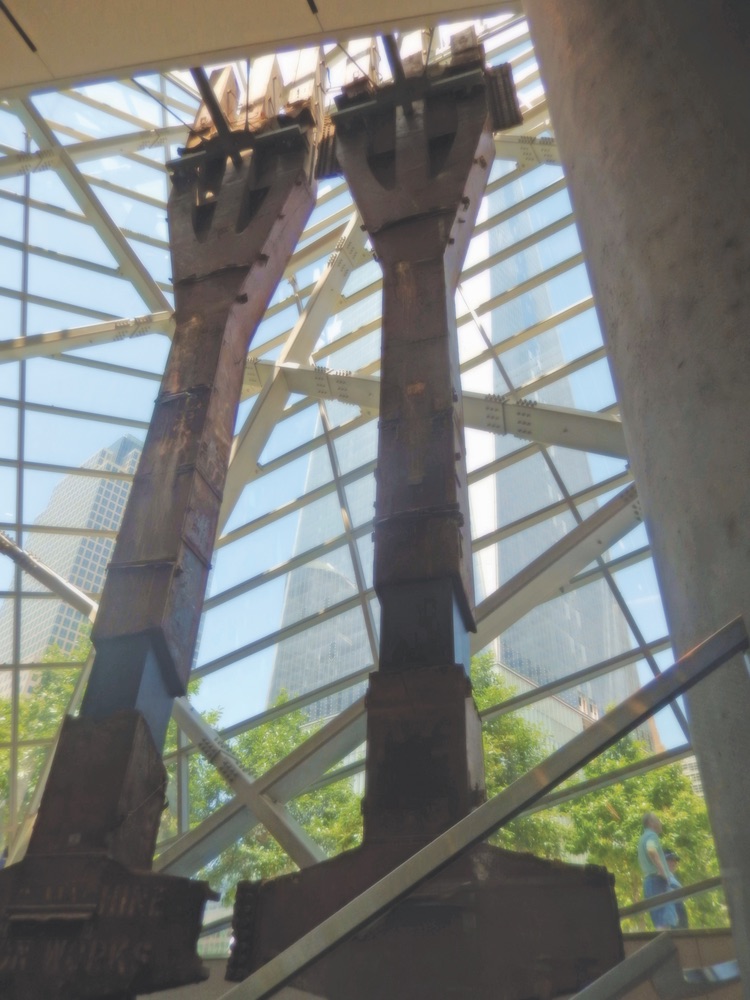
The images of the World Trade Center Towers standing but engulfed in flames nearly six miles from me were horrific. My husband worked as a commodities trader in Four World Trade Center, part of a cluster of shorter buildings that surrounded the towers. My heart raced. Where was Peter? Was he okay?
A few minutes later, Peter entered. We watched in disbelief as the news channel broadcast images of a huge plume of smoke erupting from the Pentagon after a third hijacked commercial plane crashed there. Minutes later, the South Tower of the World Trade Center crumbled. A massive cloud of dust and debris rose and enveloped Lower Manhattan. Then we heard the news that another hijacked plane had crashed in Pennsylvania. Shortly thereafter, the World Trade Center’s North Tower collapsed from the top down.
In the days that followed, the city was dark and disturbed. A smoky smell from the rubble and ash drifted north into our neighborhood. An eerie, unnatural silence hung over the streets and avenues. New York City’s yellow cabs had left town. Many people also sought sanctuary outside the city. Fighter jets soared above the skyscrapers. Their engines screamed with the sound of freedom. The lifestyle we had known had departed.
When school resumed the following week, I walked my son to school every morning and home each afternoon. We passed the Church of Saint Ignatius Loyola on the corner of East Eighty-Fourth Street and Park Avenue, and on most days, funerals were taking place inside. The beautifully somber sound of bagpipes honoring the fallen cascaded onto the street. Black limousines were parked at the curb.
Recently, Peter and I returned to the World Trade Center site with our now twelve-year-old son, John. He was born a month after the towers fell. We wanted to visit the 9/11 Memorial and Museum; it had opened the month before and we were curious. Before going in, Peter wanted to grab lunch at one of his old haunts, O’Hara’s, an authentic Irish pub within steps of the memorial. O’Hara’s had survived the falling rubble. Red and blue first-responder patches adorned every inch above the wooden bar and around large wall-length mirrors. A waitress with an Irish brogue took our order, and we nourished ourselves as if in preparation for what we were about to experience across the street.
After navigating the lines of people outside, we found where to wait for a timed entry ticket. Passing through security, we were directed down a long hallway toward an escalator. It slowly descended below street level. The lights dimmed. A lump rose in my throat. I listened to a soundscape of voices of those remembering their experiences of 9/11. At the bottom of the ramp, the space opened into the original foundation, the bedrock of the Twin Towers.
The Foundation Hall reveals the scale and magnitude of the World Trade Center buildings and their ultimate destruction. Remnants from the original construction of the sixteen-acre complex, which began in 1966, include the slurry wall and the Last Column.
This large, underground arena’s raw slurry wall segment shows part of the barrier that prevents the Hudson River from seeping in and flooding the site. There are exposed support beams. The site required tons of structural steel—more than the Verrazano-Narrows Bridge, according to a placard.
The Last Column was freed from its footing on May 28, 2002. Draped in an American flag, it was driven out of the bedrock level of Ground Zero as bagpipers played “Amazing Grace” and “Taps.” The column honors the rescue, recovery, and relief efforts after the disaster.
“It can take three hours to go through some of the artifacts,” a tour guide, who requested anonymity, said. “Touches your heart. A lady came through and found a note written to her on the missing-person wall.”
The exhibitions and education center include the Memorial Hall, which occupies the space between the footprints of the two towers that once stood over 1,360 feet tall. The Survivors’ Stairs, an escape route used by hundreds, is adjacent to an escalator carrying visitors to the lowest exhibit level.
The In Memoriam exhibition honors each of the nearly three thousand people killed in 2001 in the towers, at the Pentagon, and in Somerset County, Pennsylvania, and the six victims of the 1993 World Trade Center bombing. A multiscreen film experience, “Rebirth at Ground Zero,” uses time-lapse footage and interviews to show firsthand views of the renewal of the site and personal journeys of some of those directly impacted by the attacks.
Fixed above and across a wall in a rectangular shape is an installation of thousands of blue squares, an artist’s re-creation of the color of the sky that September morning.

New York City Fire Department’s Ladder Company 3 truck rests in the Center Passage. The East Village unit lost eleven members who entered the North Tower. The thousands who responded “formed the single largest dispatch of nonmilitary emergency personnel in the history of NYC and the nation,” a sign notes. Also on display are an elevator motor and a section of twisted, gashed steel from the North Tower’s facade.
As visitors exit by riding the escalators back up, light fills a glass atrium. Here, the historic Twin Tower tridents rise skyward, reflecting the sunlight. These seven-story steel structures had been part of the distinctive Gothic-arch motif at the base of the original skyscrapers. Through the museum’s atrium, the tridents are visible from the Memorial Plaza.
The Memorial Plaza is breathtaking and serene. Two pools were formed in the footprints of the original Twin Towers and surrounded by a plaza of trees. Thirty-foot waterfalls cascade into twin pools. The water then descends into a center void. The names of the victims are inscribed in bronze parapets around the tops of the pools. Architect Michael Arad and landscape architect Peter Walker designed the Memorial and succeeded in providing a much-needed sense of restful peace there.
The World Trade Center towers were once the tallest buildings in New York City, and as a young girl, I rode the ear-popping elevator to the 107th floor of the North Tower and looked at the view from the Windows on the World restaurant. Now, where the towers once rose skyward, both the skyline and the footprint of the city have changed. The museum that rests in their place cannot replicate the enormity of the loss, nor does it try to shock visitors with the horrors of the chronology of terror. Instead, it offers a glimpse of the past and recounts the gravity of the catastrophe so that we will never forget.
— V —
Share This Story!
KEEP UP WITH THE LATEST STORIES FROM VIE




